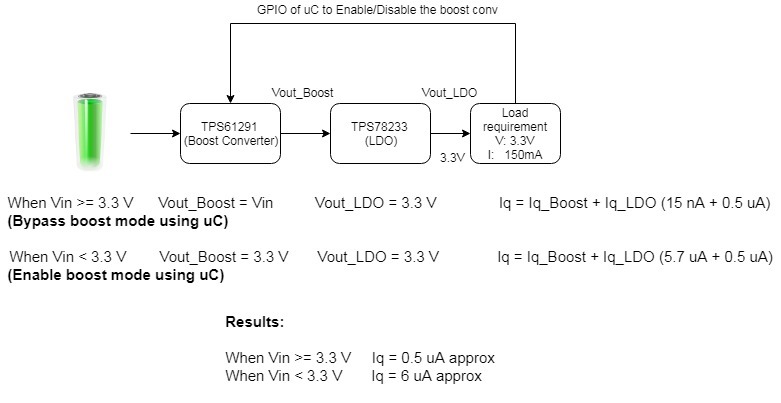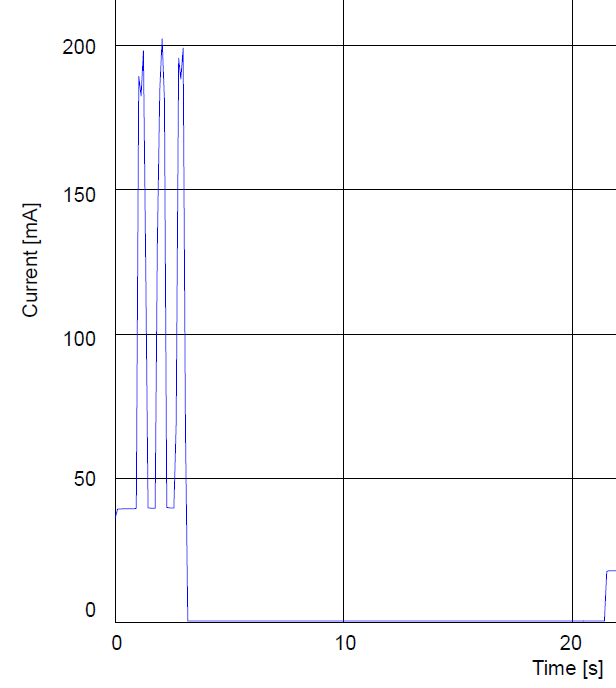Other Parts Discussed in Thread: TPS62737, , TPS61098, TPS61099, TPS62743, TPS62808, TPS62840
Hi,
I am currently working on a battery operated device having below requirements,
Requirements:
Battery voltage range: 2 V to 3.7V
Output Current during active: 150mA (max) (pulse current with max amplitute of 150mA for a duration of 15ms)
Output current during sleep: 10uA
Quiescent current : in terms of nA (less than 1uA)
Current Status:
I have started developing my design considering TPS62737 initially, it is found to operate as per my requirements, but TI says not to consider it for further designs,
i want to go for other similar converter with similar specs,
I have also started to work on TPS62740 but then i realized that it cant support 150mA under below condition,
Iout = 100mA max when
VOUTnom ≤ VIN ≤ VOUTnom +0.7V (battery voltage is typ 3.7V)
This means it will usually fall under this condition.
Can you please help me find a better converter which can fit into my requirements?
Thanks,
Manmohan M



